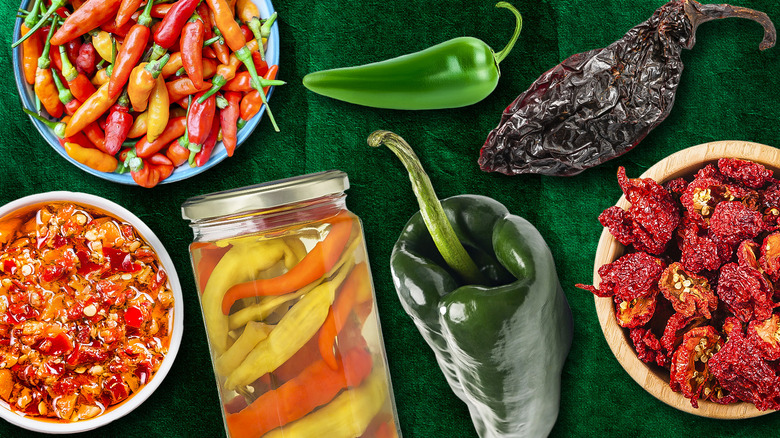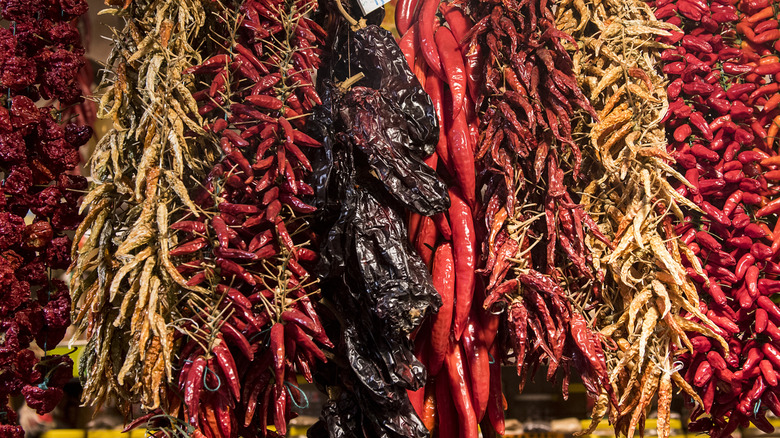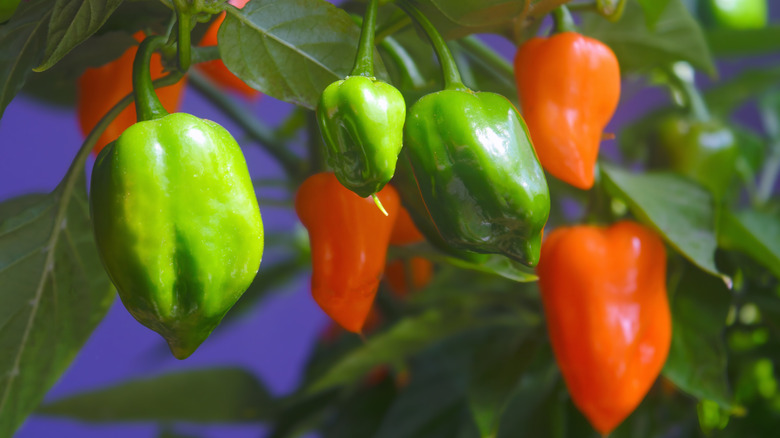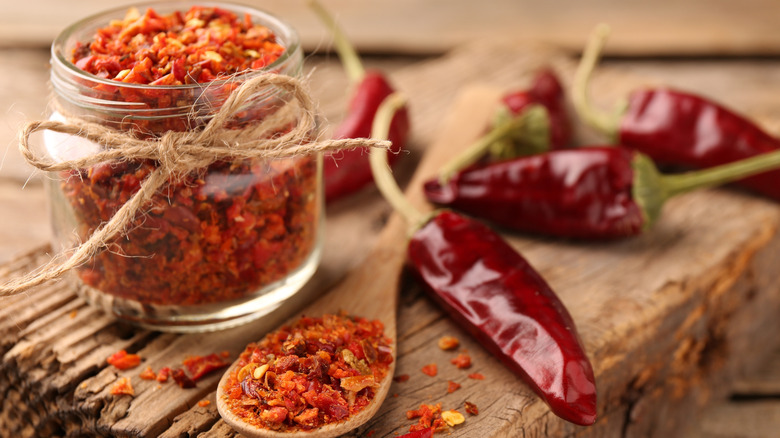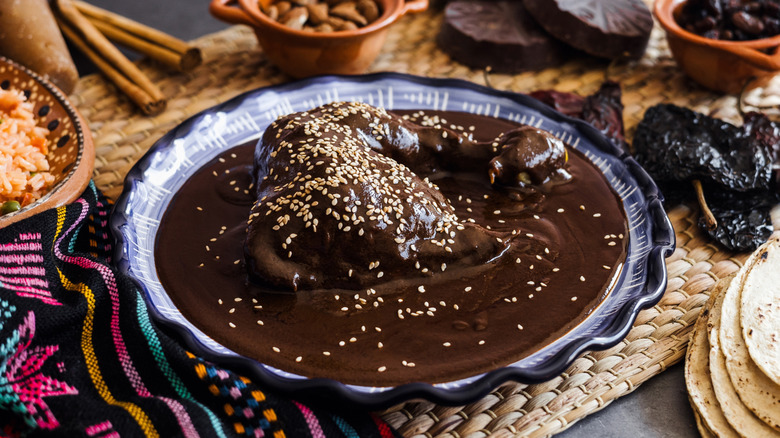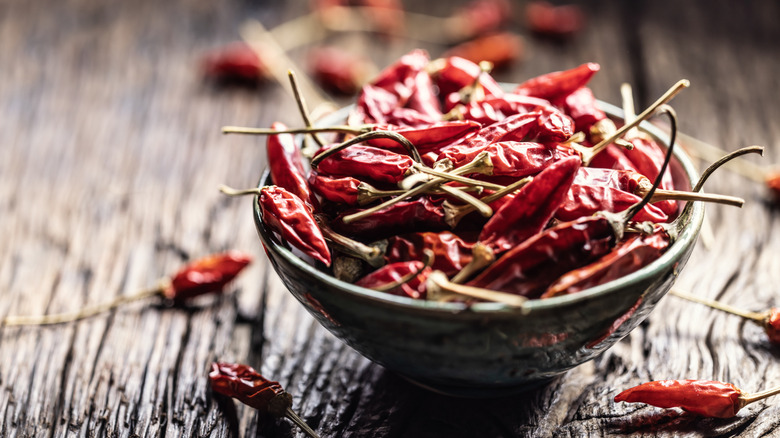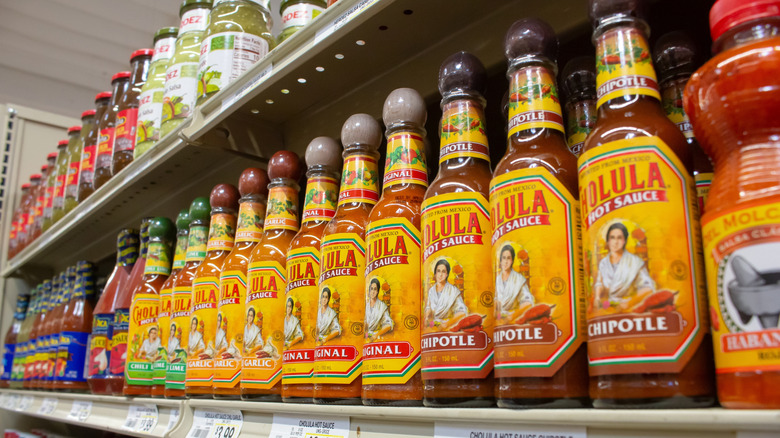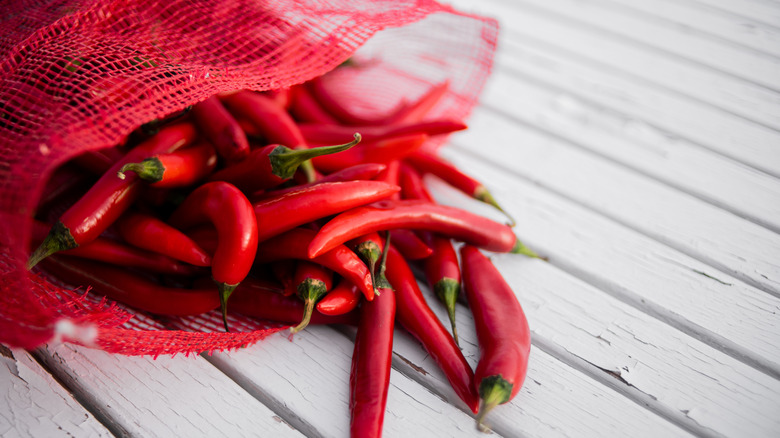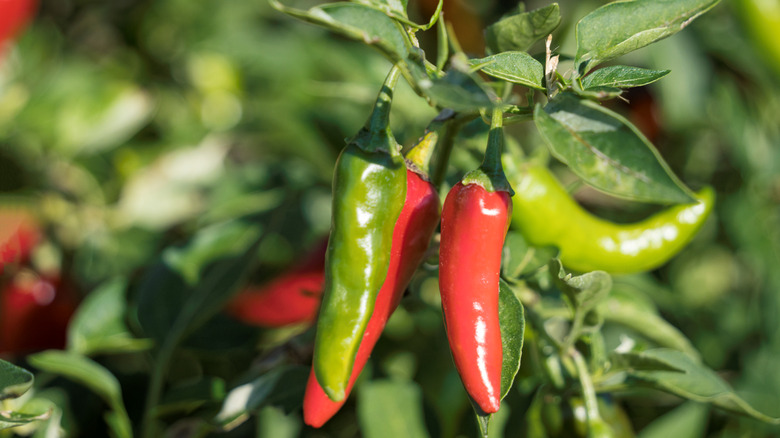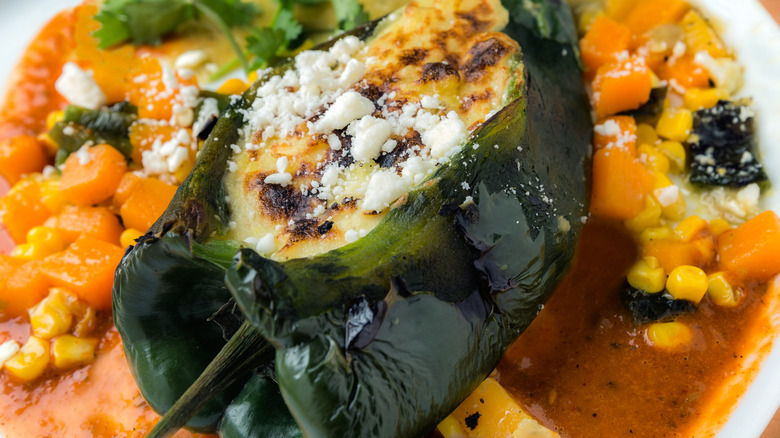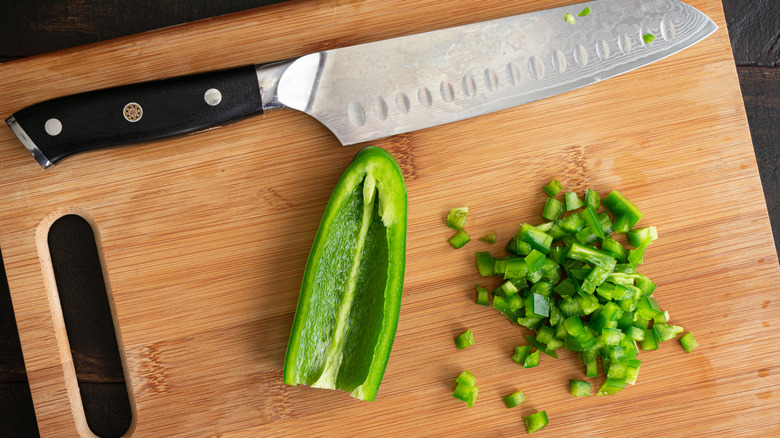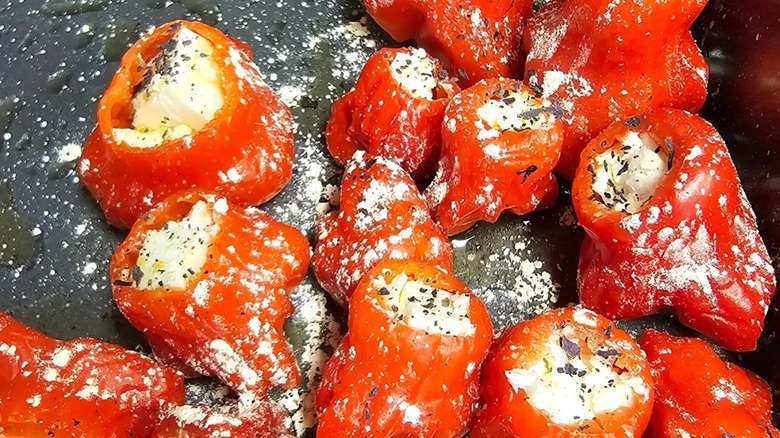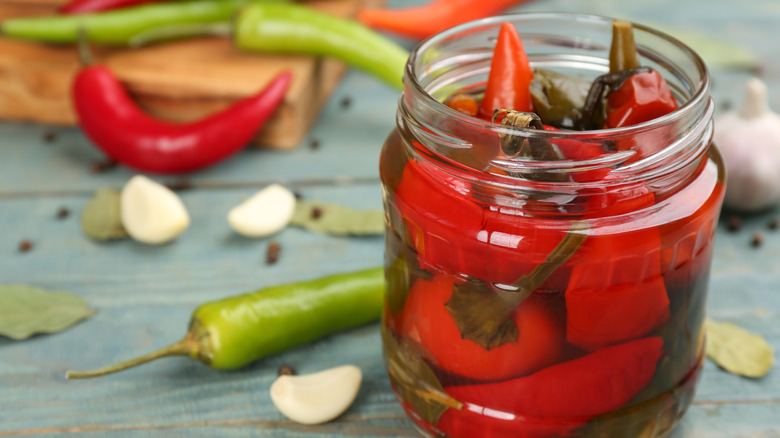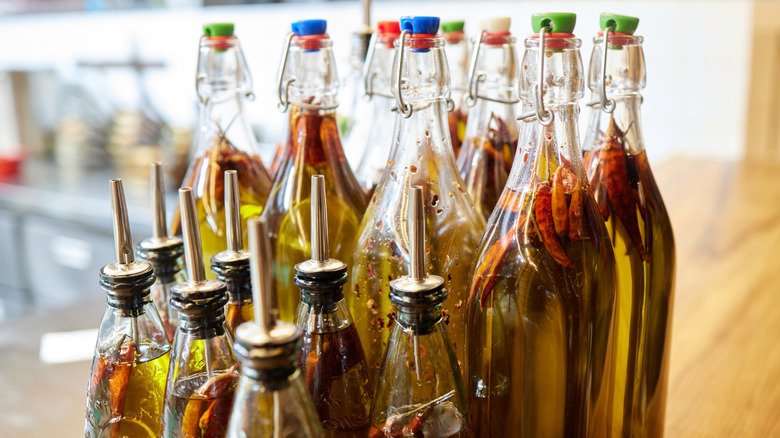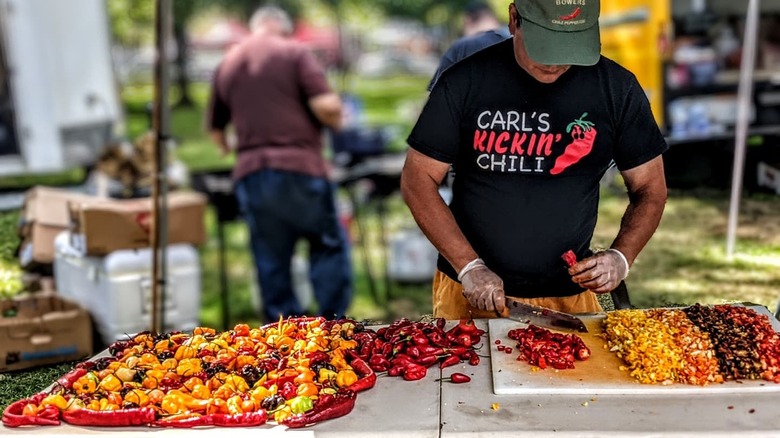A Spicy Guide To All Things Hot Peppers
Hot peppers, also known as chili peppers, are among the most transformative ingredients in culinary history. Their fiery nature has fundamentally changed how we experience food. These remarkable fruits — yes, peppers are actually fruits, not vegetables — have earned their reputation through centuries of cultivation, offering an extraordinary range of heat levels and complex flavor profiles.
From the spicy kick of serranos to the intense burn of habaneros, hot peppers have established themselves as essential ingredients in millions of kitchens worldwide. Unlike black pepper, which comes from the black pepper plant and gets its milder heat from piperine, hot peppers derive their signature burn from capsaicin. This creates an entirely different sensory experience.
Beyond their ability to add heat to dishes, chili peppers have shaped cultural traditions and revolutionized global cuisine. In this comprehensive guide, we'll explore their fascinating origins, examine their diverse varieties, and share expert insights on selection, preparation, and use. Whether you're looking to master the art of cooking with hot peppers or simply want to understand what makes them extraordinary, this guide will equip you with the knowledge to harness their full potential.
The origins of hot peppers
The story of hot peppers begins in the lush lowlands of Brazil, where these spicy fruits first emerged as nature's own culinary innovation. What makes their tale particularly fascinating is how they spread — primarily through birds, who, unlike mammals, can't detect the peppers' signature capsaicin. This evolutionary quirk helped hot peppers develop their spicy defense mechanism, capsaicinoids, which effectively deterred mammals from eating them while allowing birds to distribute their seeds far and wide.
The domestication of hot peppers, however, began around 6,000 years ago in what is now Mexico. From the region of southern Puebla and northern Oaxaca to southeastern Veracruz, early cultivators unknowingly selected seeds from plants with the best fruits, eventually producing the five original American varieties. When Christopher Columbus encountered hot peppers in the "New World," he found them widely used by indigenous cultures. While they weren't the black pepper he'd sought, they proved an even more valuable discovery.
After their introduction to Europe, it didn't take long for hot peppers to spark a culinary revolution, first taking root in Portugal before spreading rapidly across the world through maritime trade routes. The peppers' ability to grow in diverse climates, combined with their powerful flavoring properties and preservation capabilities, made them an instant success in many cultures. As the centuries passed, different regions developed their own preferred varieties and preparation methods. Today, these versatile fruits have found homes in gardens and kitchens globally, proof of their impressive adaptability and universal appeal.
Varieties of hot peppers
The world of hot peppers is incredibly diverse, with over 400 recognized varieties spanning five domesticated species and 26 wild species. The most varied among them, C. annuum, includes familiar favorites like jalapeños, habaneros, and poblanos — but that's just the tip of the iceberg. New hybrids and cultivars continue to emerge, expanding this spicy family tree even further.
When it comes to choosing varieties, Dave DeWitt, hot pepper expert and author of multiple books on the subject, has some personal recommendations. "My favorites are New Mexican fresh red and habanero," he shares. "Fresh red because it has the best flavor for making a sauce but a low heat level so you won't get burned out. I made a sauce one time, tasted it, and ate it as a soup." If you're into a spicier variety, he says, "Habaneros are much hotter but have a marvelous apricot-like aroma. A small amount makes the best fresh salsa."
DeWitt also points out some lesser-known varieties worth exploring, like the serrano and manzano peppers. "The serrano is used like a jalapeño but has a better flavor," he says. "The manzano is nearly as hot as habanero and is the only pepper with black seeds." These insights reveal just how much variety exists within the world of hot peppers, each bringing its own unique characteristics to the table.
The Scoville Scale for measuring heat
Understanding exactly how hot your peppers are can be crucial for cooking, and that's where the Scoville Scale comes in. This scientific measurement of spiciness has been helping pepper enthusiasts gauge heat levels for over a century. While the testing methods have evolved significantly since its inception, the scale remains the standard for measuring pepper heat.
As a hot pepper authority, Dave DeWitt explains the scale's origins and evolution. "Invented by pharmacologist Wilbur Scoville in 1912, the scale is based on dilution," he says. "The more you have to dilute it until the heat is gone, the higher it is on the scale." DeWitt notes that while human tasters were initially used, modern technology has revolutionized the process. "Now chromatography determines the parts per million of capsaicin, which is then converted to SHUs (Scoville Heat Units) based on the formula that pure capsaicin equals 16 million SHUs," DeWitt explains. As of 2024, the hottest pepper in the world is called Pepper X, which ranks at an average of 2,693,000 SHUs. For the sake of comparison, the very spicy ghost pepper ranks at one million SHUs.
It's also worth noting that the inner ribs of the pepper contain the highest concentrations of capsaicin, making them the spiciest parts, followed by the seeds. Along with the Scoville ratings, knowing this will make them easier to cook with, as you can select or avoid these parts depending on your heat tolerance and cooking needs.
Hot peppers around the world
Hot peppers have embedded themselves into the culinary fabric of countless cultures, each region showcasing unique varieties that align with its climate, flavor preferences, and culinary traditions. Mexico, for instance, boasts an array of peppers like jalapeños, serranos, and poblanos, which add layers of heat and flavor to dishes like tacos, salsas, and mole sauces. Thai cuisine, by contrast, heavily relies on the Thai Bird's Eye chili, or prik ki noo, for its explosive heat in curries and stir-fries. And in Italy, the Calabrian chili has made a name for itself in rustic sauces and pasta dishes.
Interestingly, Indian cuisine was not always as spicy as it is now known — and loved — for. As Dave DeWitt explains, "Before chiles were introduced into India, the "hot" spice used in curries was black pepper." The transition from black pepper to chiles not only altered the heat profile of Indian dishes but also gave rise to a broader palette of flavors that have now become signature elements in Indian curries and chutneys.
All in all, this global pepper journey underscores how adaptable these spicy devils are and the remarkable ways in which cultures have harnessed their power to create some truly tasty culinary experiences.
Dried hot peppers
Dried peppers hold a special place in many cuisines, valued for their concentrated flavors. Take the smoky chipotle, a dried and smoked jalapeño, which adds a signature depth to Mexican stews, salsas, and marinades. Cayenne, another widely used dried pepper, brings a punch of heat to dishes in Cajun, Creole, and Indian cooking, where its robust kick is essential to iconic dishes like gumbo and spicy curries.
Another star in the dried pepper realm is the ancho, the dried version of the poblano. This pepper is a staple in traditional Mexican recipes like mole, where its mild heat and earthy, slightly sweet flavor add complexity. In Southeast Asia, dried Thai chilies often find their way into soups and stir-fries, imparting a distinct fiery undertone that complements the freshness of lime, lemongrass, and fish sauce.
Dried peppers offer the flexibility to adjust heat levels in cooking, and they last for months, if not years, when stored properly. Furthermore, these dried chiles can easily be turned into powders to add to your spice rack so that they're convenient to use. Whether you keep them whole or grind them up, they're great for everything from spicing up a stew to making a pepper-infused oil.
Hot pepper condiments and sauces
Hot pepper sauces and condiments are essential for bringing bold flavor to the kitchen, each type offering its own signature twist on spice. For example, take the garlicky sweetness of Sriracha or the vinegary tang of classic Louisiana-style sauces. There's also Cholula's balanced zest and the smoky depth of a chipotle-based sauce. No matter which of the multitudes of hot sauce options you choose, you're almost always adding layers of flavor that go beyond just heat.
Dave DeWitt recommends "Cholula, Sriracha, and any habanero sauce with a carrot base" to bring versatile, vibrant flavors that spice enthusiasts crave. Specifically, a carrot base to a habanero sauce will cut through a little bit of the fiery intensity with sweetness, perfect for those seeking a more dimensional spicy flavor. If you're hesitant about spiciness, just a few drops can go a long way. These flavorful and powerful sauces are so concentrated that even a small amount can significantly spice up your dish.
Health benefits of hot peppers
Hot peppers pack a surprising amount of nutritional power into their small, fiery packages. Capsaicin, the active compound that gives peppers their heat, has been widely shown in research to boost metabolism and may even aid in weight management. Studies also suggest that capsaicin possesses anti-inflammatory properties, making it a natural option for pain relief and heart health.
According to Dave DeWitt, chili peppers deliver a significant dose of essential vitamins, too. "They are a great source of vitamins A and C," DeWitt points out, which are both known for supporting the immune system and promoting skin health.
In addition to these benefits, hot peppers may help lower blood pressure, as capsaicin can improve blood flow and circulation. While they shouldn't be considered a cure-all, incorporating hot peppers into your diet can be an exciting and flavorful way to bolster overall health while adding spice to your meals.
Growing your own hot peppers
Growing your own hot peppers is a fun and easy way to spice up your cooking with fresh flavors right from your backyard or balcony. With the right care, even novice gardeners can cultivate a variety of peppers. Hot peppers do best in warm, sunny conditions, with at least eight hours of direct sunlight daily and well-drained soil to prevent root rot. Timing is also essential: planting after the last frost of the season ensures they'll have the warmth they need to flourish.
One common pitfall Dave DeWitt sees in beginners is over-fertilizing. "They over-fertilize with too much nitrogen, which causes foliar growth instead of pod development," he explains. In other words, too much fertilizer leads to leafy plants but fewer peppers. Instead, a balanced fertilizer schedule can help pepper plants focus on fruit production. On top of that, watering about an inch per week and supporting plants with stakes will further encourage healthy growth and yield.
By following these growing tips, you'll be rewarded with an array of homegrown peppers, perfect for salsas, sauces, and other spicy dishes. Growing your own also lets you experiment with rare varieties, giving you lots of opportunities to showcase your garden's colorful, spicy bounty.
Cooking with hot peppers
Cooking with hot peppers is an art, as the heat level can radically alter a dish's flavor profile. For beginners or those cautious about spice, Dave DeWitt suggests gradually building up the heat in a specific way: "By using chile powders, you can add heat gradually until you reach your desired heat level." This approach allows for more control than using raw or dried peppers, especially when cooking with particularly potent types like habaneros or ghost peppers.
Two of DeWitt's personal favorite dishes that feature hot peppers are chiles rellenos, where whole peppers are stuffed with cheese and meat, and Jamaican jerk chicken or pork, which uses a blend of spices and peppers for a robust, spicy flavor. Whether using fresh, dried, or powders, peppers provide endless opportunities to elevate dishes with both heat and complexity.
Experimenting with different varieties of hot peppers in traditional and new recipes can also give you the chance to try the plentiful options out there. Just remember to start small if you're unfamiliar with a pepper's heat level so you don't end up making a dish you can't enjoy.
Safety tips for handling hot peppers
Handling hot peppers safely can save you from a world of discomfort later. Capsaicin, the compound responsible for heat, can be harsh on the skin and eyes, so wearing gloves while preparing peppers is always a good idea. Dave DeWitt specifically warns, "Wear gloves, don't rub your eyes, and if you fry them, wear eye protection." Even a small touch of capsaicin can cause a lingering burn if it comes into contact with sensitive areas.
After handling peppers, wash your hands thoroughly with soap and avoid touching your face. In cases where capsaicin residue proves stubborn, a mixture of dish soap and alcohol — even that vodka you have in your cabinet — can help dissolve the oils more effectively than water alone. If you do happen to accidentally touch your face or eyes, which has happened to the best of us, rinsing immediately with milk or cold yogurt can help neutralize the burn, as dairy products break down capsaicin more effectively than water.
Pairing hot peppers with other ingredients
Hot peppers shine when paired with complementary ingredients that balance or enhance their intense flavors. Creamy, soft cheeses like goat cheese or brie mellow the heat with their rich texture, while hearty breads like cornbread and focaccia offer a mild, savory backdrop that lets the pepper's spice pop without overwhelming the palate.
For bolder combinations, fruits like berries and mango add a natural sweetness that contrasts beautifully with peppers, creating an exciting, multi-layered bite. Acidic additions, such as a squeeze of lime juice, are staples in Mexican and Asian cuisines, adding a brightness that boosts the heat without masking it. Bitter greens like spinach and kale also work well, grounding the spice with earthy tones. When it comes to drinks, pairing hot peppers with a crisp, hoppy beer can offer a refreshing balance that accentuates the fruitiness of certain hot peppers like habaneros.
Using different hot pepper varieties thoughtfully can easily transform a dish by complementing each pepper's distinct flavors. For instance, jalapeños offer a fresh, grassy note, while chipotles add a smoky depth. Carefully pairing these peppers with compatible ingredients allows the taste profiles to shine, creating a well-rounded and nuanced flavor experience.
Preserving hot peppers
Preserving hot peppers lets you capture their intense flavors to enjoy beyond harvest season, and there are several methods worth considering. Pickling, for instance, involves soaking and storing peppers in a vinegar brine, creating a spicy, tangy treat that's perfect for garnishing or even snacking. Drying, another popular method, concentrates their heat and flavor, making dried peppers ideal for grinding into flakes or powders. This is highly convenient for cooking.
However, Dave DeWitt suggests freezing as the best way to maintain a pepper's natural flavor. "Freezing is the best preservation method. Pickling drastically alters the flavor of all chiles," he says. He also notes that "freezing increases the pungency of chiles slightly because it dehydrates them and eliminates any dilution factors. The flavor is unaffected."
For those who want the pure taste of fresh peppers with a longer shelf life, freezing is ideal. If flavor transformation isn't a big concern, then experimenting with pickling or drying can offer something a little different.
Making hot pepper infusions
Infusing liquids with hot peppers is an art that creates some truly versatile and dynamic concoctions. Whether you're working with oils, kinds of vinegar, or spirits, the process extracts both the complex flavors and heat from the peppers, resulting in customizable condiments or beverages that can transform ordinary dishes or drinks into extraordinary ones. The technique requires minimal effort but delivers maximum impact, making it an excellent way to preserve and concentrate pepper flavors.
One of Dave DeWitt's favorite infusions is great in a beloved cocktail: the Bloody Mary. "Small chiles like piquins are steeped in vodka (the longer, the hotter) and the vodka is used to make bloody marys," he explains. However, the possibilities extend far beyond cocktails. Infused oils can enhance stir-fries and marinades, while vinegar infusions create vibrant dressings and finishing sauces. The key lies in selecting the right combination of peppers and liquid base for your desired outcome. When working with oils, gentle heat can accelerate the infusion process, while alcohol and vinegar infusions benefit from longer steeping times at room temperature. Remember to strain your infusions thoroughly and store them properly to maintain their quality and prevent spoilage.
Hot pepper festivals
Hot pepper festivals are lively celebrations that highlight the cultural, culinary, and often historical importance of chili peppers in regional cuisine. From Mexico and Thailand to the United States, these events offer a unique experience where visitors can explore the incredible versatility of peppers and their role in local traditions. Alongside cooking contests, pepper-eating challenges, and tastings, festival-goers can often enjoy music, crafts, and workshops that showcase traditional uses and growing methods for various pepper varieties.
Notable festivals include the National Fiery Foods & Barbecue Show in Albuquerque, New Mexico, a massive event where attendees taste-test dozens of hot sauces and culinary specialties. The Texas Hot Sauce Festival is another popular event that gathers spice lovers to participate in contests and sample small-batch sauces, salsas, and other pepper-centric foods from regional vendors. Across the border in Mexico, Xalapa's Jalapeño Festival is an annual celebration of one of the country's beloved chile peppers, with workshops, local vendors, and even dance performances. For many, these festivals are an opportunity to taste exotic and rare pepper varieties, gain cooking inspiration, and learn about the growing process and history of hot peppers.
